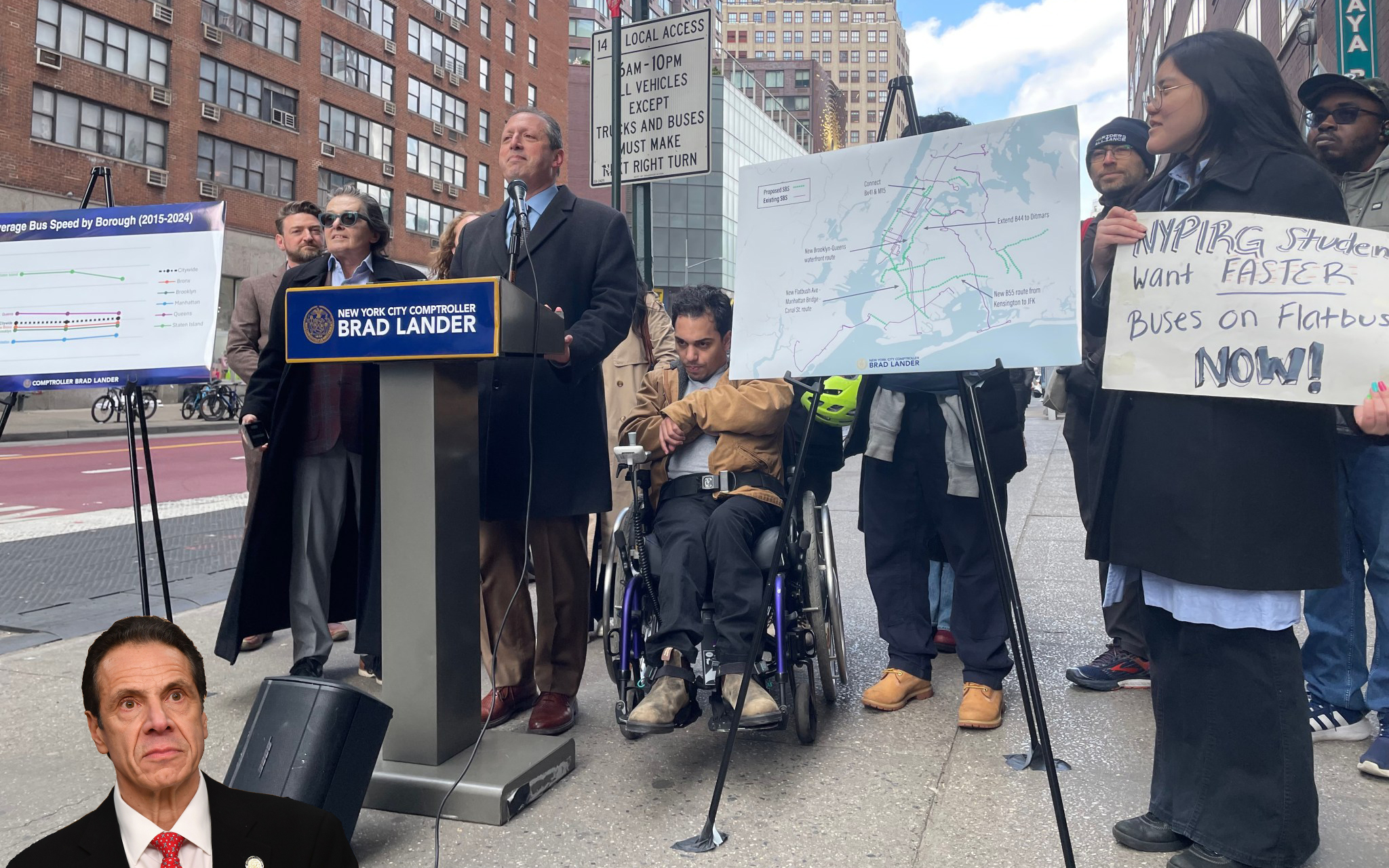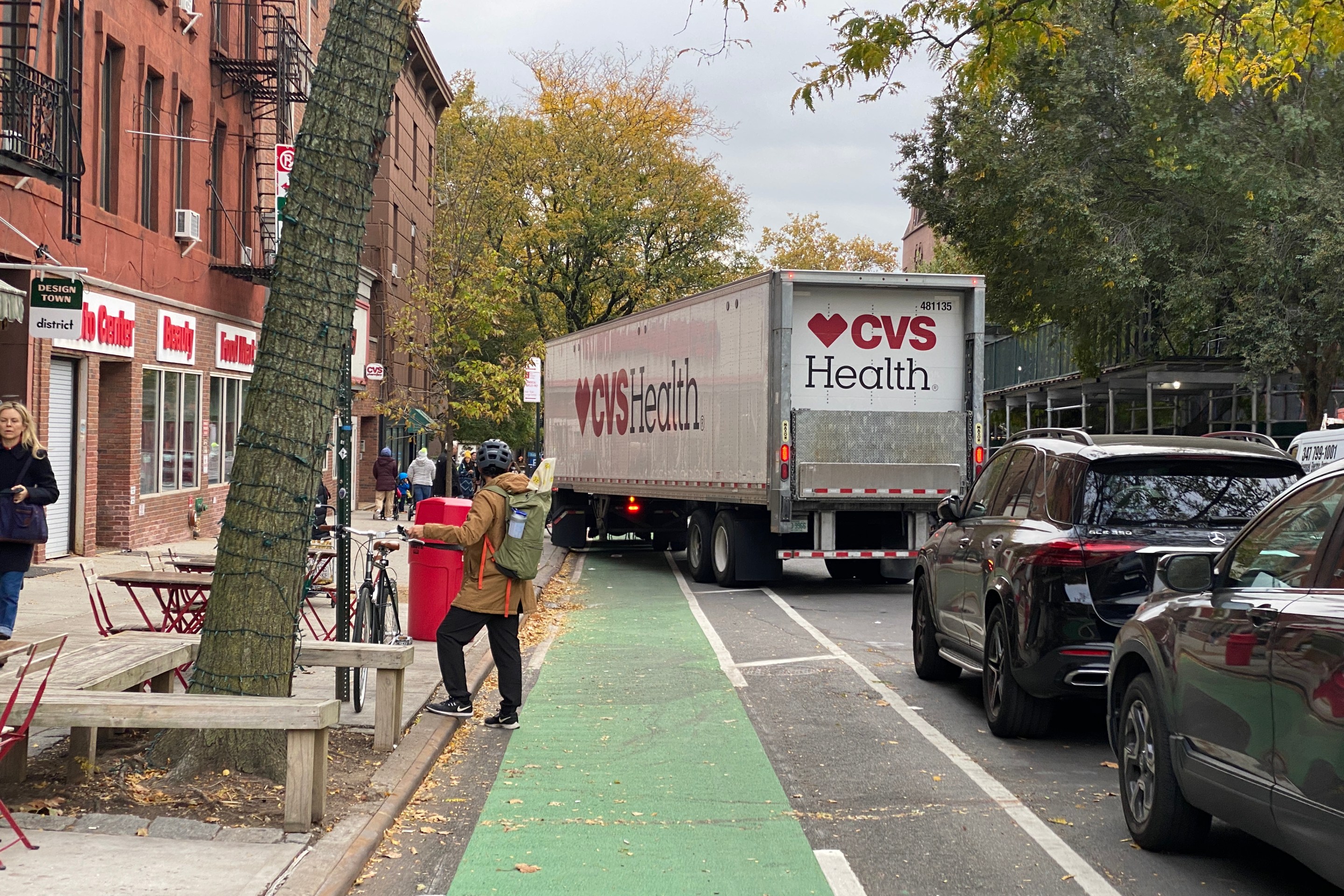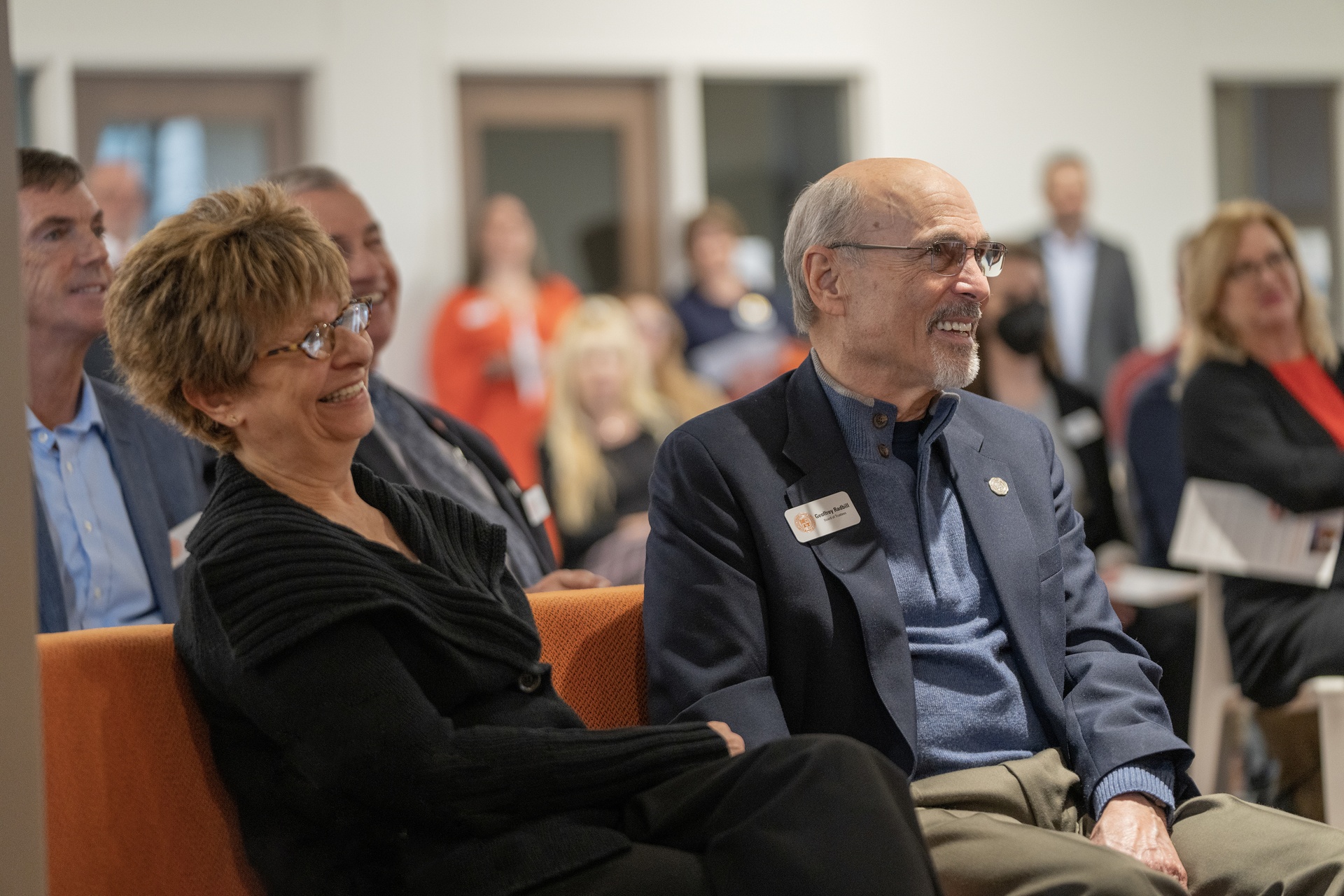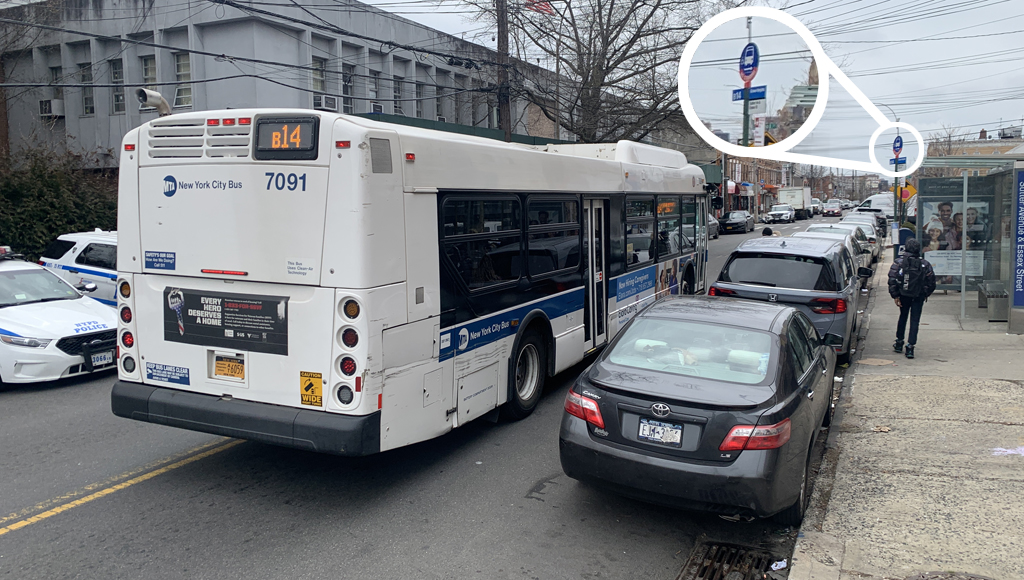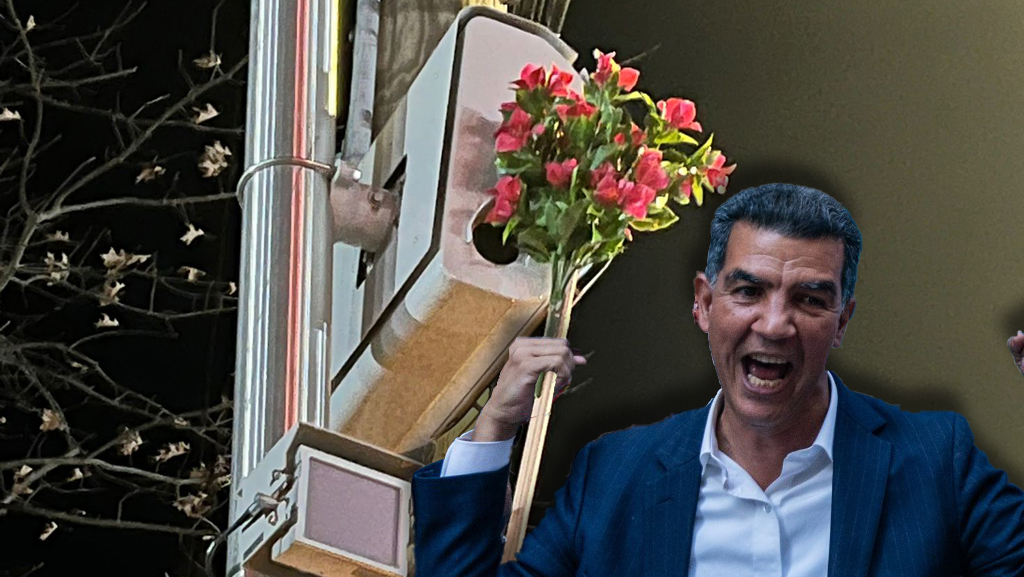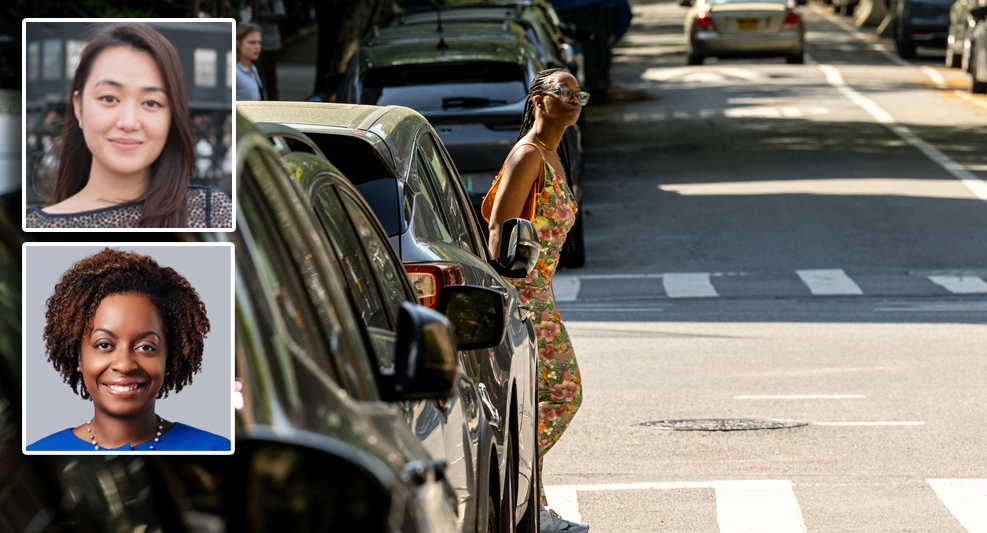Mayoral hopeful Brad Lander says he'll speed up the city's slowest-in-the-nation buses by reviving a program that was killed in 2018 by — wait for it — then-Gov. Andrew Cuomo, who just happens to Lander's rival in the June Democratic primary for mayor.
Lander, currently the comptroller, said on Thursday that, if elected, he will add more Select Bus Service routes, the bus rapid transit-like solution that was once the dream of then-Mayor Bill de Blasio until Cuomo got in his way.
SBS combines a number of elements that allow the buses to move faster and more efficiently: off-board fare payment, bus lanes, larger articulated buses, spaced-out stops, bus bulbs and transit signal priority. The combination leads to better service; speeds on SBS routes hit a 12-month average of 9.2 miles hour as of February 2025, compared to 7.6 miles per hour for local buses.
SBS was introduced on Fordham Road in 2008, the first of 16 routes launched by the city and MTA through 2019. But after de Blasio announced a vision for 21 more SBS routes in 10 years, then-Gov. Cuomo's MTA pulled funding in a cost cutting measure. That left hundreds of thousands of bus riders in the lurch.
"MTA and NYC DOT should collaborate to revive and implement all 20 SBS routes originally proposed in 2009 and create new inter-borough connections by extending SBS routes across bridges and between boroughs," Lander's report said. "Specific connections to prioritize include creating a new SBS route along the Brooklyn-Queens waterfront and upgrading the B55 to an SBS route between Kensington and JFK Airport."
The Brooklyn-Queens route mirrors some of the de Blasio-era waterfront BQX streetcar.
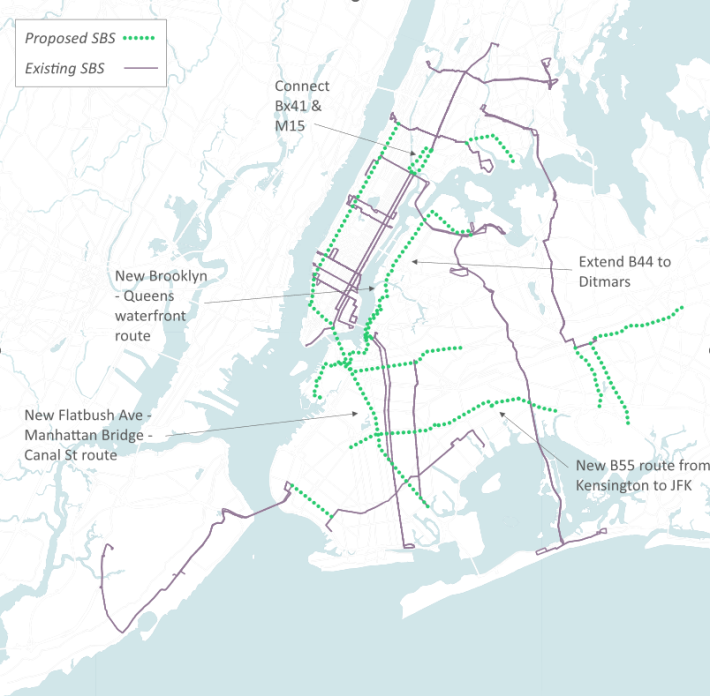
In addition to creating new SBS routes, Lander's report suggested changing how the city does most of its bus lanes in order to bring SBS closer to international bus rapid transit standards — specifically by installing them on the center of the street where car drivers are less likely to block them.
"Only 6.8 miles (4.2 percent) of the city’s bus lanes are center or median running, despite their strong potential to improve bus speeds and deter vehicles from illegally parking or driving in them compared to curbside lanes," the report said. "The city should prioritize high-quality, center-running lanes along appropriate corridors where streets are wide enough to accommodate them."
Cuomo's MTA suspended the de-Blasio-era vision, but the roles are now reversed: MTA Chairman and CEO Janno Lieber has made common cause with bus activists, repeatedly riffing that "buses are the engines of equity," while Mayor Adams has failed to even come close to delivering on his promise to create 150 miles of bus lanes in four years. Adams's tenure has been instead marked by his interventions to slow down or trash bus lane projects. At one point he even suggested they were preferred by gentrifiers (bus riders are overwhelmingly low income).
Both sides need to sit down and hash this stuff out so that bus service can actually get better, Lander said.
"This really is a takes two-to-tango situation," the comptroller said at a press conference on Thursday. "You need an enthusiastic MTA and you need an enthusiastic [city] Department of Transportation that wants to do the bus lanes. ... The mayor can't do it by himself, but a mayor that was pushing to do it, that was pushing forward on the bus lanes and trying to engage the MTA can find a way."
Other suggestions to improve bus service in Lander's report include:
- Creating busways on 34th Street and 42nd Street in Manhattan.
- Standardizing the hours that bus lanes are in effect across the whole city.
- Piloting low-floor buses on express routes to make them easier for people with disabilities to board.
- Expand the city's low-income "Fair Fares" discount to New Yorkers earning up to 200 percent of the poverty level.
The report also embraced longstanding calls for the MTA begin all-door boarding, which speeds buses by up to 40 percent on SBS routes.
Lieber has steadfastly resisted introducing even an all-door boarding pilot to the bus system, despite the fact that OMNY readers are installed on the back door of every bus the MTA owns. Transit officials have suggested that the high rate of fare evasion on buses makes it too risky to change fare collection policies.
Lander dismissed the MTA's objections to all-door boarding. It's well-past time to finally open the back door in conjunction with an expanded fare enforcement, he said.
"I'm not sure I even understand what the point was of adding the OMNY readers at the back of the bus. If there's no all-door boarding, that's a huge waste of money," Lander told reporters.
For its part, the city DOT said it would review Lander's report. And MTA spokesperson Joana Flores said that her agency "agrees with anyone who wants faster buses."
"But possibly the biggest keys to speeding up buses are dedicated bus lanes and automated camera enforcement," Flores added. "We have seen that where they exist, buses are moving faster.”
Cuomo's office did not respond to a request for comment regarding his decision to put the kibosh on the SBS program. We will update this story if it does.
